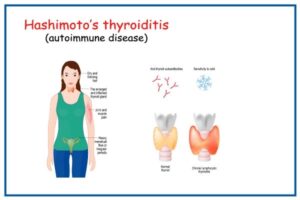Insulin resistance is a condition in which the body’s cells become resistant to the effects of insulin, a hormone produced by the pancreas that helps regulate blood sugar levels. As a result, the body may need to produce higher levels of insulin to maintain normal blood sugar levels. Over time, this can lead to high blood sugar levels and potentially contribute to the development of type 2 diabetes.
Insulin resistance is often depicted graphically by plotting the relationship between insulin levels and blood sugar levels. In a normal, healthy person, insulin levels will rise in response to an increase in blood sugar levels, helping to move glucose out of the bloodstream and into cells for use as energy. However, in a person with insulin resistance, higher levels of insulin are needed to achieve the same effect on blood sugar levels. This can be visualized as a flatter slope on the insulin-blood sugar curve, indicating that higher insulin levels are needed to achieve the same decrease in blood sugar levels.
In addition to the insulin-blood sugar curve, other graphs may be used to depict insulin resistance, such as the homeostatic model assessment of insulin resistance (HOMA-IR), which is calculated based on fasting blood sugar and insulin levels, or the oral glucose tolerance test (OGTT), which measures blood sugar levels after consuming a glucose-rich drink. These tests can help diagnose insulin resistance and monitor its progression over time.
Insulin resistance is a common health condition that affects a significant portion of the population. The following are some statistics related to insulin resistance:
- Prevalence: According to the American Diabetes Association, approximately 88 million adults in the United States have prediabetes, a condition that often precedes type 2 diabetes and is characterized by insulin resistance.
- Gender and age: Insulin resistance is more common in women than in men, and the risk increases with age.
- Ethnicity: Certain ethnic groups, including African Americans, Hispanic/Latino Americans, and Native Americans, are more likely to develop insulin resistance and type 2 diabetes.
- Obesity: Insulin resistance is strongly associated with obesity, with studies estimating that approximately 50-70% of obese individuals have insulin resistance.
- Family history: A family history of type 2 diabetes or insulin resistance increases an individual’s risk of developing these conditions.
- Global prevalence: Insulin resistance is a global health concern, with estimates suggesting that up to 25% of the global population may be affected.
Overall, insulin resistance is a widespread health issue that affects a significant portion of the population, particularly those who are overweight, have a family history of diabetes, or are from certain ethnic groups. Insulin resistance can lead to the progression of many diseases including:
- Type 2 diabetes: Insulin resistance is a major risk factor for developing type 2 diabetes. When the pancreas can no longer produce enough insulin to overcome insulin resistance, blood sugar levels rise, leading to diabetes.
- Cardiovascular disease: Insulin resistance has been linked to an increased risk of heart disease, stroke, and other cardiovascular problems. This may be due in part to the fact that insulin resistance can lead to high blood pressure, high triglyceride levels, and inflammation.
- Obesity: Insulin resistance is often associated with obesity. When the body’s cells become resistant to insulin, the pancreas produces more insulin, which can lead to weight gain.
- Polycystic ovary syndrome (PCOS): Insulin resistance is a common feature of PCOS, a hormonal disorder that affects women of reproductive age. Insulin resistance can contribute to the development of PCOS and make symptoms worse.
- Non-alcoholic fatty liver disease (NAFLD): Insulin resistance is a major risk factor for NAFLD, a condition in which excess fat accumulates in the liver. Over time, NAFLD can lead to liver damage and cirrhosis.
- Cognitive decline: Insulin resistance has been linked to cognitive decline and an increased risk of Alzheimer’s disease.
Fortunately, there is hope. Our Insulin Resistance Program is designed to help you manage your blood sugar levels, improve your overall health, and prevent the development of type 2 diabetes.
Our program includes:
- Personalized diet and exercise plans: Our team of experts will work with you to create a customized plan tailored to your unique needs and lifestyle.
- Education and support: We will provide you with the tools and resources you need to understand insulin resistance, manage your symptoms, and achieve your goals.
- Monitoring and tracking: We will closely monitor your progress and adjust your plan as needed to ensure you are getting the best results possible.
- Results you can see and feel: Our program has helped countless people improve their blood sugar levels, lose weight, and regain their energy and vitality.
Don’t let insulin resistance control your life any longer. Contact us to learn more and get started on your path to a healthier future.



